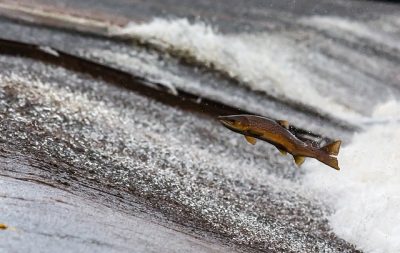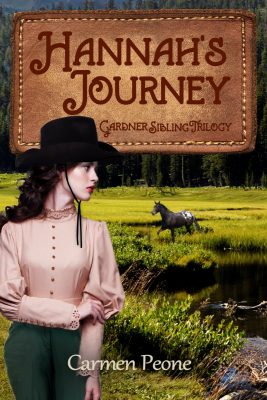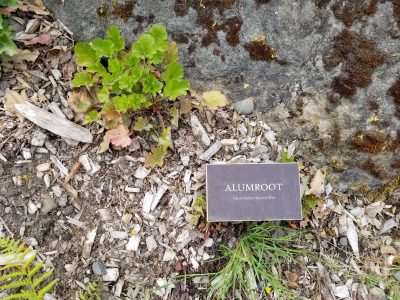Traditional Native Foods and Medicines of the Lakes People

Salmon was the main staple for the Lakes people until 1942 when Grand Coulee Dam was built. The dam may have been a saving grace for non-natives, but for the tribes who depended on the fish for survival, it meant a lost way of life.
Seventy-five years later the tribe has two fish hatcheries on the reservation that harvest and distribute fish for the members, the newest being the Chief Joseph salmon hatchery near the Chief Joseph Dam.
Traditionally, berries and roots offered rich nutrient to the People. Huckleberries, Serviceberries, and Camas (a lily harvested in May) were of the most favored. Indian onion (harvested in April along lowland streams, the hills in May, and the high mountains in June) and carrots were also frequently used. In the spring, when the earth and all it offered came to life from a long winter’s hibernation, the Lakes people held a first roots and berries ceremony offering thanks for the Creator for His blessings and promise of a new season.
The same was true for the salmon ceremony. And not just for the Lakes. Tribes from nearby gathered near the Kettle Falls in Northeast Washington State to spear salmon as they jumped the Kettle Falls.
Not only did the Lakes people use the land for food, but also for medicine. Healers used plants in form of teas and poultices for injury and illness. About 130 of the 260 species of plants were used for medicine; some plants were mixed together while others were used alone. The commonly used plants included:
- For cuts, bruises and skin infections: horsetail, sumac, chocolate tips, alum root, rattlesnake plantain,
thimbleberry, and balsam root
- Eye medicines: horsetail, pine pitch, shooting star, yarrow, and Oregon grape
- Rinses for hair and scalp: cow parsnip, chokecherry, red willow, and yarrow
- Digestive ailment: tree fungus, pine cambium, yarrow, soapberry, and raspberry
- Changing of the blood in March and November: Juniper, snow brush, red cedar, Douglas fir and wild rose
- Arthritis: stinging nettle
The Alum root was said to be the fastest healing root of all medicines. It was used for sore throats, sore and cuts, and diaper rash. For more read Tribal Medicines.
Not just a fad of the past, plants are still widely used in Native communities for medicinal purposes and ceremonies.
Visit my Pinterest board and check out clothing, archery, horses and more. Tweet this.
Hannah’s Journey Excerpt:
Most of the day had passed. I wondered when we’d head back. Or if we were gonna remain on top of the mountain for the night. With a storm comin’, I prayed they planned to head back soon. We rode a short distance to a thin creek. I dismounted and gulped icy water until my head hurt. Pekam and Spupaleena laughed. They sipped theirs while I held my head in my hands. We nestled in the shade of trees near a patch of ferns. I fingered its lacy limbs until my headache subsided. “Do we have anything to eat?”
“Did you not bring food?” Pekam said.
I frowned. “No.” Part of the test.
“Perhaps you did.” He ambled to the parfleche bag strapped to the back of my saddle, slid out a pouch, and flung it at me.

Pre-order Hannah’s Journey here.
Recipe:
Foil Venison Dinner
1-lb venison (moose our household favorite)
1-cup peas
4 medium carrots
4 medium potatoes
1 onion
1 garlic clove
Sea salt and pepper to taste
Barbecue sauce to taste
Heat oven to 350 degrees: tear off 4 pieces of heavy-duty foil at least 18 inches in length
Cut meat into 1-inch cubes
On the center of each piece of foil, place 1 carrot sliced, 1 potato quartered, and ¼ of the venison. Top with peas. Add pieces of onion and clove to taste and a dash of sea salt and pepper. Drizzle barbecue sauce on top. Wrap securely in foil and place on baking sheet. Bake for 60 minutes or until venison and potatoes are tender. The foil wraps can be cooked on the barbecue and over an open fire.
Do you use herbal medicines? What do you like best about them?

 thimbleberry, and balsam root
thimbleberry, and balsam root
With a background in healthcare, I am most impressed with the lengthy list of cures for common ailments. And with a freezer full of bison, I am most pleased with the recipe which sounds nutritious and its cooking won’t heat my kitchen. Would be delicious with one’s appetite spiked by eating it in the fresh air of a campfire.
I agree, Judith. Most anything ate in the fresh air and a campfire is delicious! This list is a spec on mule buck. There is so much in the book I refer to written by tribal elders. It is fascinating.
It wasn’t until recent years that I realized how harmful the Grand Coulee Dam was to native peoples. It’s good, Carmen, that you bring this sort of thing to our awareness.
Mary, in the original dam plans, there was a fish ladder, and for some reason, probably cost, it was removed. Nothing would have changed if there would have been a ladder. But that is the way of the world, change for the majority.